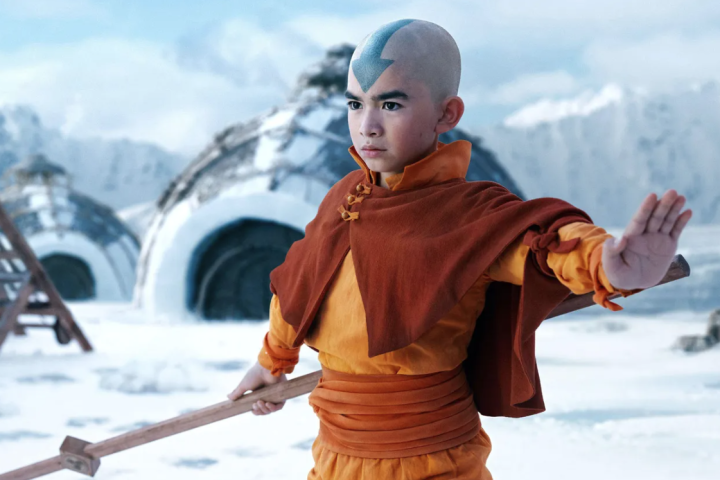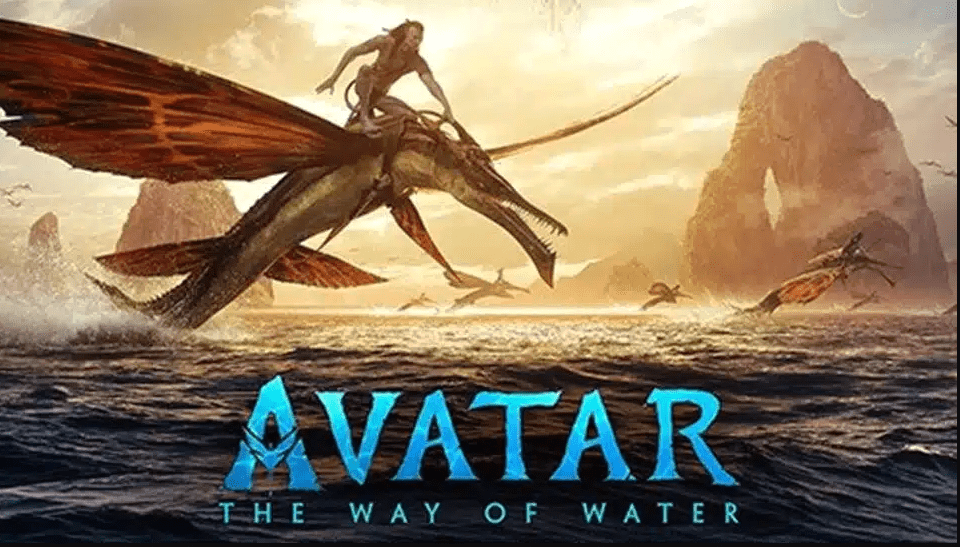When I saw ‘Avatar’ 13 years ago, I found its innovative cinematic technology and the political subtext of its story exciting. Although I was less impressed by the second movie, I can’t say I was disappointed. Because Avatar: The Way of Water, like the first movie, comes to us with an innovative technology. In the subtext, there are spot-on criticisms about the colonial mentality and ecology.
I would like to discuss ‘Avatar: The Path of Water’… If we start with the story, it is possible to see that writer and director James Cameron has placed the series on a family-centered track since the second film. When we consider long-running series like ‘Star Wars’, ‘family’ is certainly not a surprising choice. What is different about today’s ‘serial cinema’, which is dominated by ‘prequels’ that tell the story before and origin stories that take everything from the beginning, is that it proceeds on a straight route. ‘The Water’s Way’ begins with the happy story of Jake Sully (Sam Worthington) and Neytiri (Zoe Saldana), who meet and fall in love in the first movie. In the family story summarized in the opening sequence, we learn that they have two sons, Neteyam (Jamie Flatters) and Lo’ak (Britain Dalton). After them, two daughters join the family. First they adopt Kiri, then Tuktirey (Trinity Jo-Li Bliss). Miles ‘Spider’ Socorro (Jack Champion), who couldn’t be sent to Earth at the end of the first movie because he was a baby and stayed on Pandora, grows up with Sully’s other children. By the way, 14-year-old Kiri is played by 73-year-old Sigourney Weaver, thanks to the performance capture technique.

‘Happiness is simple,’ Jake says several times in the opening chapter. Indeed, for the Na’vis, who live on the planet Pandora and belong there, happiness is not very difficult to achieve. We see that they use advanced technology only to communicate or to defend themselves when necessary; they prefer tribal lives that seem ‘primitive’ from the outside. From the inside, they live in harmony with nature and all other living things, with a very advanced ecological consciousness compared to us. Their religion is not based on discipline and strict rules, but on pure faith.
They believe that all living organisms on the planet, big and small, are in communication and that the female god Eywa lives inside everyone. For example, according to the reef people, water has no beginning and no end. Water continues inside humans as well.
Living in harmony with nature, it is not difficult for them to be happy. But when ships from outer space start landing and wreaking havoc, Sully and his family’s dream of happiness ends. They realize that this time the humans have come to wield a much more far-reaching power. It is clear that the ultimate goal of the humans is to invade and settle Pandora and make it like their world. Not only humans and robots descend from the ships, but also construction vehicles.
While the forest people of Pandora continue their war of independence against the occupation with guerrilla tactics under the leadership of Jake Sully, a special team of trained soldiers with human brains in Na’vi bodies is sent to Pandora from Earth. Jake Sully, sensing the deadly threat posed to him and his family by this team with the biological advantages of the Na’vi, decides to disappear. He takes his family with him and seeks asylum from Tonowari (Cliff Curtis) and his wife Ronal (Kate Winslet), the leader of the reef people living on the islands. Especially the children, from the very first moments, feel that life there will not be easy, that the reef people do not welcome them very well and that they will suffer from being different. While the whole family faces serious adaptation problems and conflicts, the team from Earth continues to search for Jake with ruthless counter-guerrilla methods.

Cameron, obviously thinking about the future of the series, builds the story around young characters besides Jake and Neytiri. In fact, the issues of young people dominate the movie. ‘The Way of the Water’ does not tell a heroic story like the first movie. Instead, it focuses on young people who want to be heroes. It is important to note that the plot revolves around the youth’s over-aggressiveness, lack of caution and being too brave.
Lo’ak, Spider and Kiri stand out a bit more than the other teenagers in the movie. Lo’ak’s problem is being in the shadow of his older brother Neteyam, whom everyone loves so much, and feeling lonely… The fact that he finds another ‘loner’ like him in the sea is one of the most beautiful side stories of ‘The Way of the Water’. Kiri, who doesn’t know who her father is and is seen among the reef people as a freak hybrid like her siblings, has a severe identity crisis, but she quickly adapts to life under the sea. Considering her special bond with Eywa, Kiri will be one of the strongest and most important characters in the upcoming films. Spider, a human who sees himself as part of the Na’vis, also has identity issues like Kiri. Towards the end, he is torn between his biological origin and the Na’vis to whom he feels he belongs. Another dilemma that marks the movie is Jake’s. He disagrees with Neytiri about whether he should run away or attack to protect his family.
It is difficult for me to say that the story line is striking or impressive. Nor can I claim that the characters have depth. On the other hand, ‘Avatar: The Path of Water’ is a movie that stands on its own with the visual experience and subtext it promises to the audience.
The ‘hidden star’ of the first movie was the forest on the planet Pandora. By using 3D technology, Cameron was able to make the ‘desire to be there’ visually powerful for the audience. In the second movie, we have the same experience in the sea. Moreover, a significant part of the movie takes place under the sea. We know that Cameron, who attaches great importance to these scenes, waited patiently to perfect the performance capture technique to be used in underwater shootings and even risked delaying the release date of the movie for years. There is no shortage of underwater action, conflict and thriller scenes of life and death struggle. But especially in the first episode, the scenes where Sully’s children discover the world of the reefs are unrivaled. These exploration scenes, which have the flavor of Cousteau documentaries, are almost like a visual meditation thanks to the 3D technique…
Cameron offers us beautiful images so peaceful that you can stare at them for minutes on end. So much so that ‘The Way of Water’ can be seen just for this visual experience. Especially the feeling that Kiri experiences under the sea, the feeling of being part of Eywa, is passed on to us. It is a feeling that is the heart of the film… One of the most important characteristics that distinguishes the Na’vis from the invading people is that they see themselves as an extension of nature and Eywa, and they build their civilization on this principle…
Cameron shapes the subtext of the movie through the Na’vis’ relationship with nature. Compared to the Na’vis, we better understand that humans are a species that integrates with machines, not with nature. When we see the settlement of metal and concrete that humans have built by destroying the forest, it becomes clearer what we understand by civilization. What humans have done on Pandora becomes a mirror that reflects the general sickness in the way we view our own planet.

The way the invaders in Pandora view tulcans, the whale-like sea creatures that the reef people have special bonds with and value highly, is likewise a mirror that reflects humans… In one scene, the biologist in the movie underlines that the tulcans’ brains are far superior to humans. Not only do they have a much more complex language and communication system, like whales, but their emotional intelligence is also higher than ours. While the Na’vis appreciate and respect sharing the same planet with the tulcans, the humans who settled on Pandora prefer to hunt them. Why? Because they have a trait worth a fortune. In short, the Na’vis are fighting against the invaders not only for themselves but for all living beings on the planet.
The first movie started from the human side and we, along with Jake Sully, were getting involved with the Na’vis and witnessing the colonialist mentality of humanity. The second movie takes a different route. Cameron, who says ‘Happiness is simple’, this time shows us human civilization through the eyes of the Na’vis from the very beginning. From the moment they descend from the sky, we witness the carnage of our species. Pandora becomes a mirror of what the continents of Africa, America and Australia went through at the hands of white invaders many years ago. ‘Avatar: The Path of Water’ takes place in the 22nd century on Pandora, a planet beyond the Solar System, but it is not only about Pandora but also about our world.
I recommend it especially to those who loved the first movie. Although it’s over 3 hours long, I think it doesn’t make you feel its duration with its editing and storyline. Also, the effort to introduce new characters is definitely an important factor in the length of the movie. Therefore, I predict that Cameron will be more relaxed in terms of story and will do a better job in the third movie, which is planned to be released in 2024.
7/10


